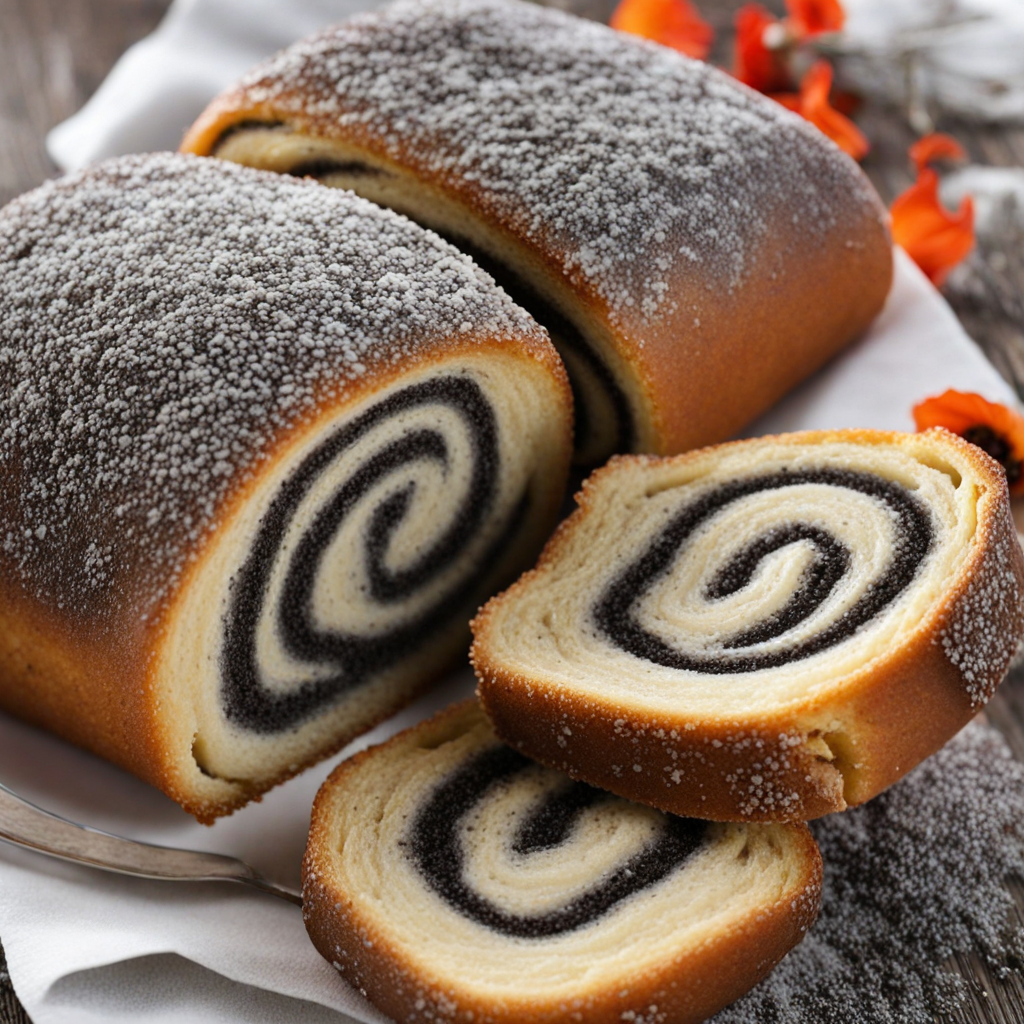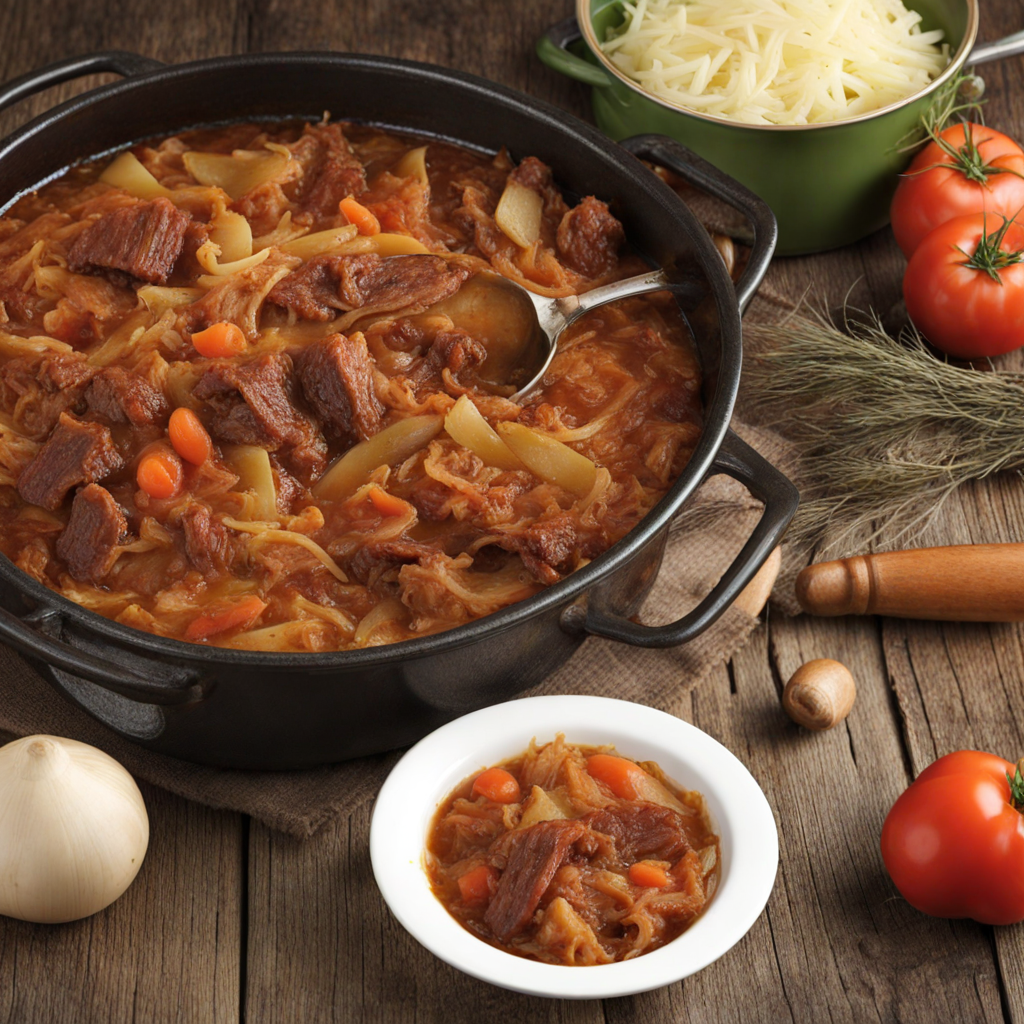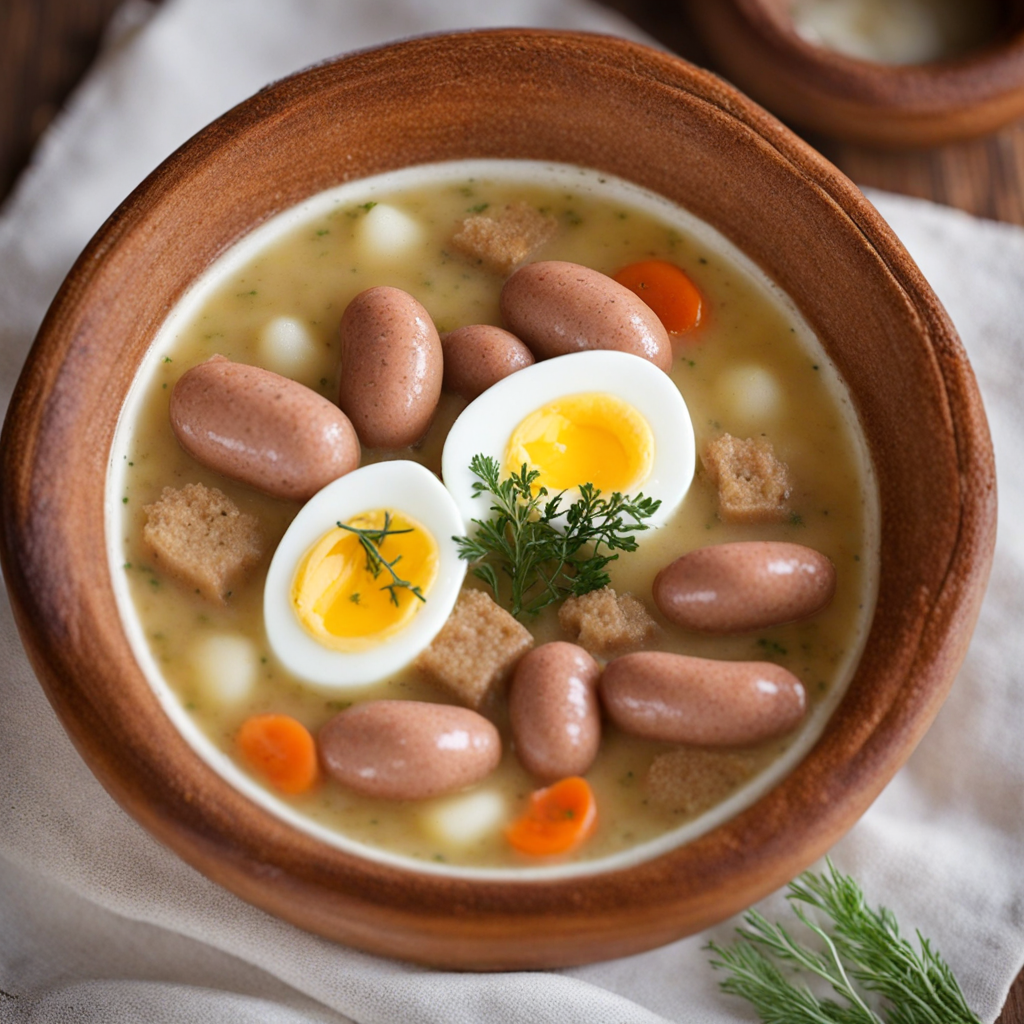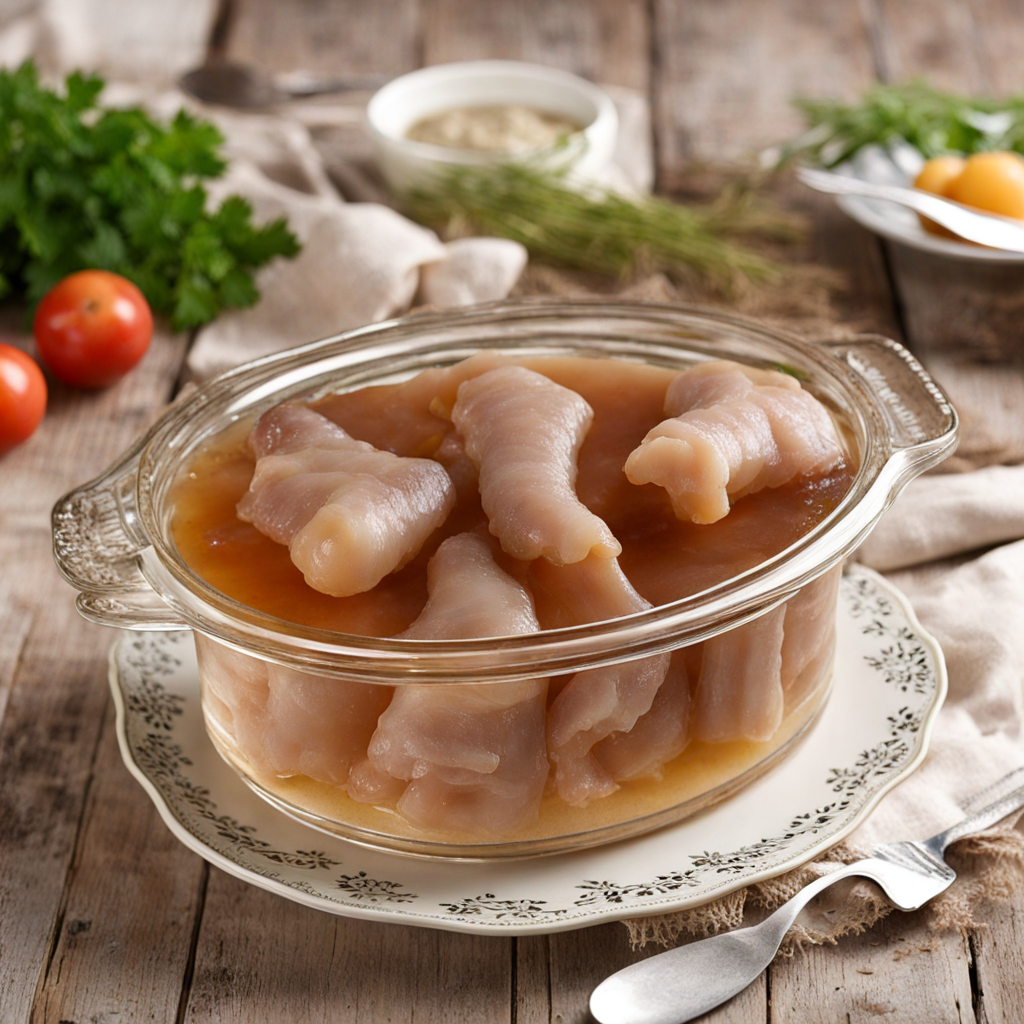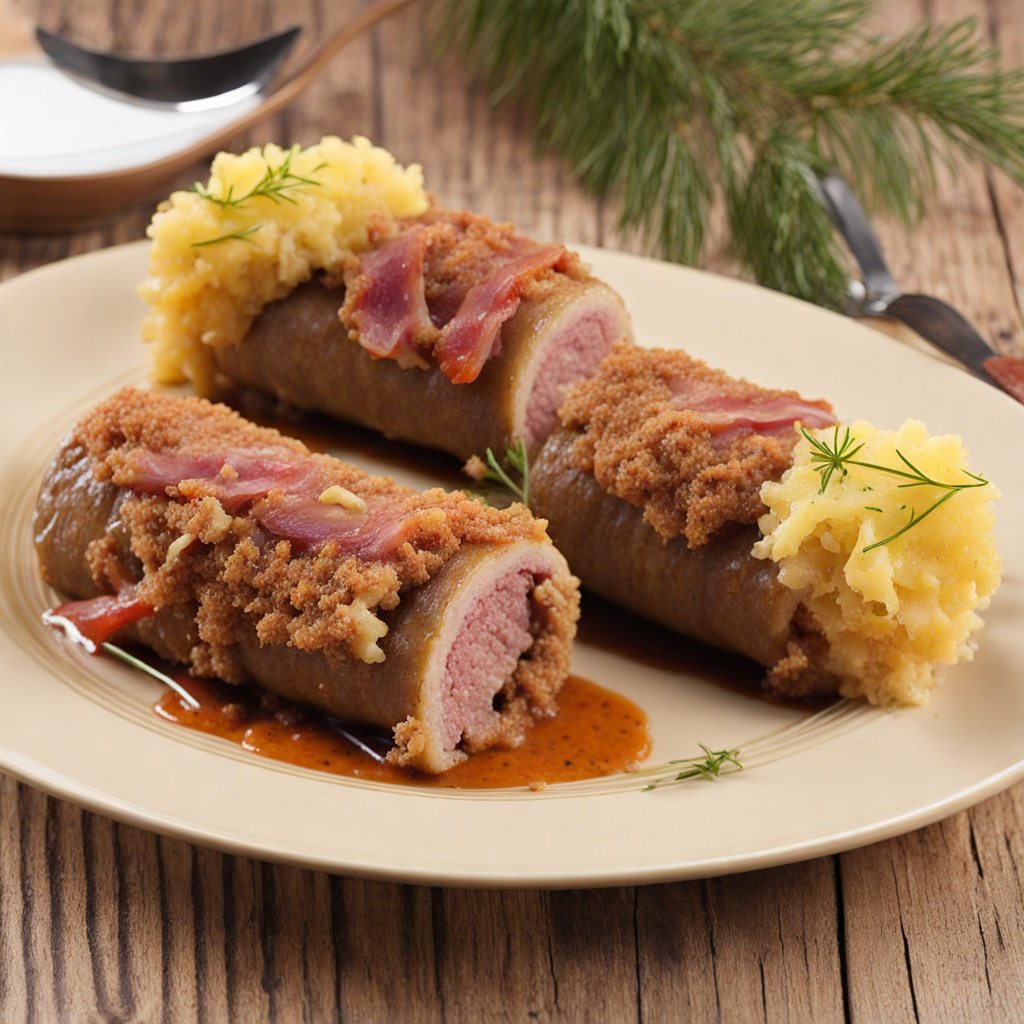Makowiec
Makowiec, often referred to as poppy seed roll, is a traditional Polish pastry that showcases the rich culinary heritage of Poland. This delightful treat is characterized by its soft, yeasted dough, which is typically enriched with butter and eggs, giving it a tender crumb and slightly sweet flavor. The dough is rolled out and generously filled with a mixture of finely ground poppy seeds, sugar, honey, and sometimes dried fruits or nuts, creating a luscious filling that is both aromatic and indulgent. The preparation of Makowiec is often a labor of love, as the poppy seeds must be carefully prepared to release their nutty flavor and creamy texture, making each bite a celebration of taste and tradition. Once baked, Makowiec takes on a beautiful golden hue, with the filling peeking through the swirls of the dough, inviting you to take a closer look. The aroma wafting from the oven is intoxicating, with the sweet notes of the poppy seeds mingling with the buttery bread. Each slice reveals the intricate spiral of the filling, making it as visually appealing as it is delicious. The outer crust is lightly crisp, while the interior remains soft and moist, creating a delightful contrast in textures that enhances the overall eating experience. It is often served dusted with powdered sugar or drizzled with a simple glaze, adding a touch of sweetness that complements the earthy flavors of the filling. Makowiec is not just a dessert; it holds a special place in Polish culture, often enjoyed during festive occasions, especially around Christmas and Easter. Sharing this pastry with family and friends is a cherished tradition, symbolizing togetherness and celebration. As you take your first bite, you’ll be greeted with a harmony of flavors—sweet, nutty, and slightly tangy, all wrapped in a soft, fluffy dough. Whether enjoyed with a cup of tea or coffee, or as part of a festive feast, Makowiec promises to transport your taste buds to a world of rich Polish flavor and culinary history.
How It Became This Dish
Makowiec: A Sweet Slice of Polish Tradition Makowiec, a rich and fragrant poppy seed roll, stands as a delectable symbol of Polish culinary heritage. This delightful pastry, characterized by its tender, yeast-leavened dough swirled with a dense filling of ground poppy seeds, nuts, and dried fruits, is much more than a beloved dessert; it is a testament to the intermingling of history, culture, and tradition in Poland. Origins of Makowiec The origins of Makowiec can be traced back to ancient times when poppy seeds were cultivated in the Mediterranean region and spread throughout Europe. Historical records indicate that the use of poppy seeds as a food ingredient dates back to the ancient Greeks and Romans. However, it wasn't until the migration of culinary practices across Europe that poppy seeds became a staple in Eastern European cuisines. In Poland, poppy seeds have been associated with prosperity and fertility. They are often featured in festive dishes, particularly during Christmas and weddings, as a symbol of abundance. The use of poppy seeds in sweet dishes can be traced back to the 16th century, when they began to appear in Polish cookbooks. The first written record of Makowiec appears in a cookbook attributed to the 18th century, but the practice of making poppy seed rolls likely predates this documentation. Cultural Significance Makowiec holds a special place in Polish culture, especially during festive occasions. It is traditionally served during Christmas Eve dinner, a meal known as Wigilia, which includes twelve meatless dishes. The inclusion of Makowiec on the table symbolizes the hope for a prosperous year ahead. The pastry's rich flavors and textures bring warmth and comfort, embodying the spirit of family gatherings and celebrations. In addition to Christmas, Makowiec is often enjoyed during weddings, Easter, and other significant family events. It is customary for families to pass down their unique recipes from generation to generation, creating a sense of continuity and connection to the past. Each family may add its twist, incorporating different fruits, nuts, or spices, making every Makowiec a reflection of its maker's personality and heritage. Development Over Time As Poland's history evolved, so did the evolution of Makowiec. The partitions of Poland in the late 18th century led to cultural exchanges with neighboring countries, particularly Germany and Austria. This fusion of culinary traditions introduced new ingredients and techniques into the preparation of Makowiec. For example, the addition of various dried fruits, such as raisins, apricots, or figs, became popular, enhancing the flavor profile of the roll. The 20th century brought significant changes to Polish society, particularly during World War II and the subsequent communist era. Food scarcity and economic hardship led to adaptations in traditional recipes. Ingredients became limited, and families often had to rely on what was available. However, the resilience and creativity of Polish cooks ensured that Makowiec remained a cherished treat, albeit with altered ingredients or simplified methods. As Poland transitioned to a market economy in the 1990s, there was a resurgence of interest in traditional foods, including Makowiec. Bakers and home cooks began to embrace artisanal techniques, focusing on high-quality ingredients and the revival of old recipes. This movement coincided with a broader trend of appreciating regional specialties, leading to the re-emergence of Makowiec in bakeries and homes across the country. Modern Variations Today, Makowiec is celebrated not only in Poland but also among Polish communities around the world. As Polish immigrants settled in various countries, they brought their culinary traditions with them, including the beloved poppy seed roll. In places like the United States, Canada, and the UK, Makowiec has become a staple at Polish-American and Polish-British celebrations, continuing to serve as a symbol of heritage and identity. Modern variations of Makowiec reflect both tradition and innovation. While the classic recipe remains popular, bakers experiment with flavors and fillings, incorporating ingredients like chocolate, orange zest, or even spices such as cinnamon and cardamom. Vegan and gluten-free adaptations have also emerged, ensuring that Makowiec can be enjoyed by a broader audience. The Craft of Makowiec Making Making Makowiec is an art form that involves patience and skill. The process begins with preparing the yeast dough, which is typically enriched with butter, sugar, and eggs, resulting in a soft and fluffy texture. The dough is allowed to rise until doubled in size, a crucial step that contributes to the final product's lightness. The filling, made from ground poppy seeds, is the star of the show. Traditionally, poppy seeds are soaked and then ground into a paste, mixed with sugar, honey, and sometimes milk or butter. Nuts, such as walnuts or almonds, along with dried fruits, are often added for additional flavor and texture. This rich filling is spread over the rolled-out dough, which is then carefully rolled up to create the characteristic swirl. After shaping, the roll is left to rise again before being baked to a golden brown, filling the kitchen with a sweet, nutty aroma. Once baked, Makowiec is often brushed with a simple syrup or glaze, giving it a shiny finish. It can be served warm or at room temperature, often sliced into generous pieces for sharing. Conclusion Makowiec is more than just a dessert; it is a culinary mosaic that tells the story of Polish history and culture. Rooted in ancient traditions, and shaped by centuries of change, this poppy seed roll continues to be a beloved symbol of family, celebration, and resilience. As Poland moves forward, the legacy of Makowiec remains strong, embodying the rich tapestry of a nation that cherishes its food and the stories behind it. Whether enjoyed during a festive dinner or as a sweet treat on a quiet afternoon, Makowiec serves as a reminder of the importance of tradition, community, and the enduring power of food to connect us all.
You may like
Discover local flavors from Poland


